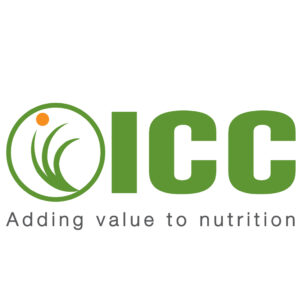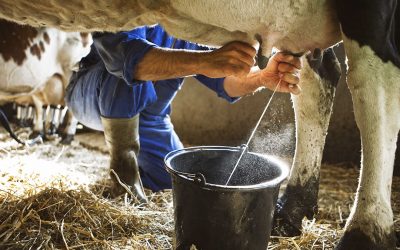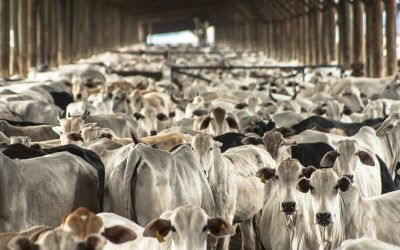Immunonutrition to improve health and productivity in aquaculture

Intensive fish and shrimp farms are naturally susceptible to bacterial, fungal, and parasitic infections, particularly at times of stress. Additionally, the aquatic environment is directly linked to aquaculture production, affecting factors such as water quality, temperature, and others.
For a long time, the most common method for managing bacterial infections and related problems has been the administration of antibiotics. However, aquaculture faces serious problems due to various adverse effects of these drugs, such as accumulation in the animals’ tissues and environmental microbiota. Therefore, providing additives that strengthen the immune system might be one of the keys to higher productivity.
The link between malnutrition and the occurrence of infections
The term ‘immunonutrition’ originated from human studies and suggests a link between malnutrition and the occurrence of infections. This concept has been understood and applied to animal nutrition for a long time, primarily due to advances in knowledge of nutrition, health, management, and environmental fields. However, the term ‘immunonutrition’ has only been effectively applied in recent years.
It is essential to understand that, in addition to being responsible for the digestion and absorption of nutrients, the gastrointestinal tract plays a crucial role in the immune response. Gut-associated lymphoid tissue (GALT) is the main component of mucosal-associated lymphoid tissue (MALT), and it is also a significant source of immune cells that monitor and protect the intestinal mucosa layers. GALT is continuously exposed to dietary antigens, microbiota, and pathogens. Then, the development and maturation of the immune system can be influenced by both external factors (environment, management, sanitary conditions, diet, etc.) and intrinsic factors (genetics, age).
Communication between the gut and the brain
These factors also impact microbiota and intestinal health. The intestinal microbiota has numerous functions within the organism and plays a crucial role in bidirectional communication between the gut and brain. In other words, the central nervous system, via the hypothalamus-pituitary axis, can be activated in response to stress factors, thus releasing cortisol. Cortisol affects the immune cells, which start to release pro-inflammatory cytokines, which in turn influence intestinal permeability and can lead to changes in the microbiota.
Besides its function in absorbing nutrients, the intestinal epithelium also acts as a physical barrier. If intestinal permeability is impaired, microorganisms and lipopolysaccharides can pass through the lamina propria, activating immune cells and releasing pro-inflammatory cytokines, which can affect the central and enteric nervous system. Several physiological changes may result from these responses, including fever, metabolic inefficiency, skeletal muscle catabolism, and synthesis of acute-phase proteins. Additionally, an impact on energy and nutrients, which are used for growth, may be observed.
Therefore, the pro-inflammatory response caused by any of the factors mentioned above can result in a compromised immunocompetence. The animals’ response and protection abilities throughout life must be modulated daily, as the metabolic cost associated with an induced immune response is low and directly impacts the maintenance of metabolic homeostasis.
β-glucans
According to the established concept of immunonutrition, amino acids (glutamine, arginine, cysteine, taurine), nucleotides, lipids (monounsaturated and polyunsaturated fatty acids, omega-3 fatty acids), vitamins (A, C, and E), and trace minerals (zinc and selenium) are classified as immunonutrients. Some immunomodulating substances, unlike nutrients, are not absorbed but can modify the immune system response, either directly or indirectly, including prebiotics, probiotics, phytotherapeutic compounds, and organic acids, among others.
β-glucans are one of the most studied immunonutrients available in the literature and are derived from the yeast cell wall (β-1,3 and 1,6-glucans). Their mode of action involves recognising phagocytic or antigen-presenting cells present in the lamina propria, located just below the intestinal epithelial cells. These cells have on their surface a type of receptor called a toll-like receptor, which recognises microbial patterns and induces an immediate innate immune response.

After this activation and phagocytosis, the phagocyte presents a processed fragment of the antigen and stimulates a chain response. Pro-inflammatory cytokines are released, activating the production, release, and mobilisation of additional phagocytic cells, as well as the proliferation of goblet cells (resulting in mucus production), among other effects. The recognition of pathogens and antigens by the innate immune system triggers immediate innate defenses and activates an adaptive immune response.
The activation of the innate immune system by β-glucans is known as immunomodulation, since there is no damage to the intestinal epithelium or invasion of epithelial cells, and only response modulation is observed, putting on alert the innate immune system cells and preparing the animal to face the challenges of production, with low metabolic cost. This is a key factor for:
- early stages of growth, during which the immune organs are under development, and the organism will depend on the innate immune response, and;
- during periods of high metabolic demand due to sanitary challenges, environmental stress factors, dysbiosis, etc.
The value of ImmunoWall
In shrimp, these aspects are even more vital, as the physiology of a crustacean differs, and it relies entirely on a non-specific immune mechanism to resist infections, meaning they do not produce antibodies. Thus, boosting the innate immune system is one of the most important strategies to avoid high mortalities in shrimp production.
ImmunoWall, a trademarked product developed and marketed by ICC Brazil, is considered an immunonutrient, as it is composed of β-glucans and mannan oligosaccharides. A study observed a reduction in mortality rates in shrimp after a challenge with Vibrio harveyi and Vibrio parahemolyticus, as well as an improvement in body weight gain. In tilapia, a significant reduction in mortalities was observed after microbial infections with L. gravieae and A. hydrophila, accompanied by dietary supplementation with Immunowall, alongside a significant increase in growth parameters.
There is still much to be studied about the microbiota-intestine-brain axis, given the complexity of the associated factors. However, the use of immunonutrients, either individually or in combination, has been proven to promote benefits for the health, welfare, growth, and productivity of animals. Therefore, it is crucial to fully understand their mode of action to enable correct monitoring, measure the benefits, and quantify the return on investment.
References are available on request.






